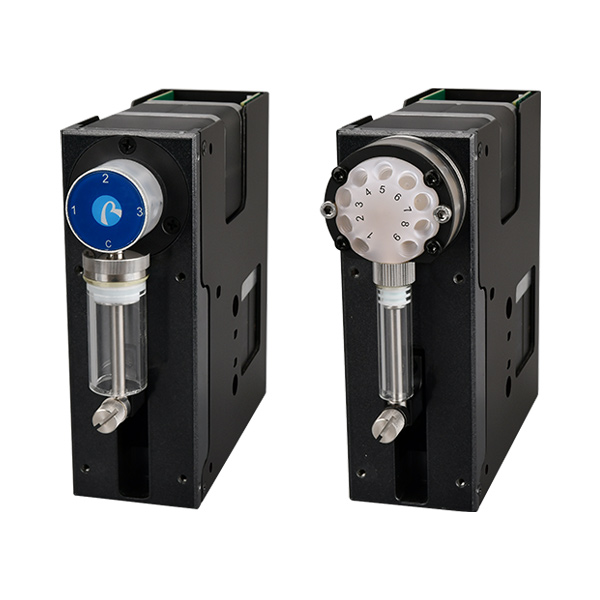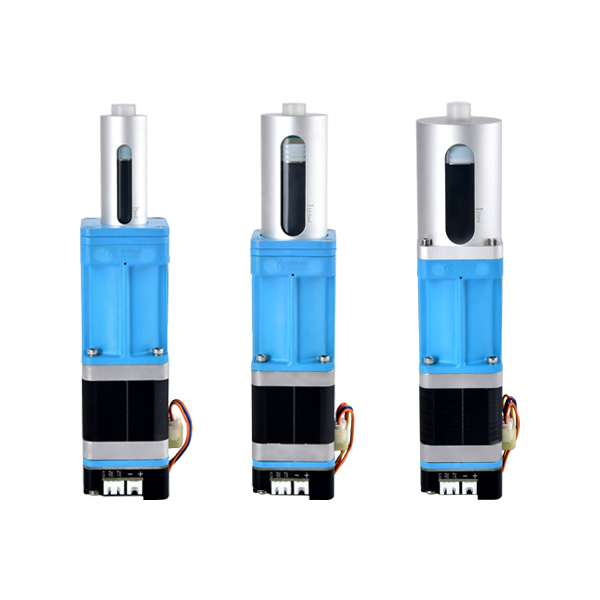A syringe pump consists of a stepper motor and its driver, a filament rod and a holder, etc. It has a reciprocating moving filament rod and a nut, so it is also called a filament pump. The nut is connected to the piston of the syringe, which holds the liquid to achieve smooth, pulsation-free liquid transfer.
A syringe pump is a mechanical device that pushes a syringe to achieve high-precision, smooth, pulsation-free fluid transfer.

They can be divided into medical and non-medical, as well as laboratory micro syringe pumps and industrial syringe pumps, single-channel and multi-channel syringe pumps by the number of channels, single-push and push-pull as well as bi-directional push-pull mode by the working mode, split and combination type by the structure, etc.
Syringe pumps have a wide range of applications, and most of them can be used in fields that require the transmission of small flows of liquid. Such as microfluidics, electrostatic spinning, mass spectrometry, industrial transport, and other fields.
1. Infusion pump is generally called a volume pump, the main purpose is to replace the traditional gravity bottle infusion and achieve more accurate and safer drug delivery purposes. Syringe pumps are also called micro-infusion pumps, which can be roughly seen from the name. The main purpose of the syringe pump is to supplement the volumetric infusion pump in the microdosing of drugs. The reason is that, when it is in small-dose drug delivery, the micro infusion pump (also known as syringe pump), compared to the general volume infusion pump, is more precise.
2. The advantages of high precision syringe pump compared to infusion pumps are higher accuracy when administering small volumes, more flexible dispensing volumes, being easier to solve tabletop placement smaller flow rate pulsation, etc.
3. Compared to syringe pumps, the advantages of infusion pumps are larger capacity, wider flow rate range, less restriction on liquid type, cheaper consumables, lower drug concentration, less irritation, and easier to do functions such as running needle alarm and infusion heating.

How to use the syringe pump: 1) connect the power cord and turn on the switch; 2) find out the distance between the syringe and the equipment inlet port, to avoid damage to the syringe because the distance is not enough; 3) find out the location of the syringe, the clutch nut pinch and move the slider to the left, then slowly lift the syringe pressure plate and place it on the upper edge of the syringe according to the plate, and then slowly place the syringe installation plate (remember to place the syringe in a horizontal state, not tilted). Press the clutch button and slowly move the sliding plate to the left side of the syringe to fit it.